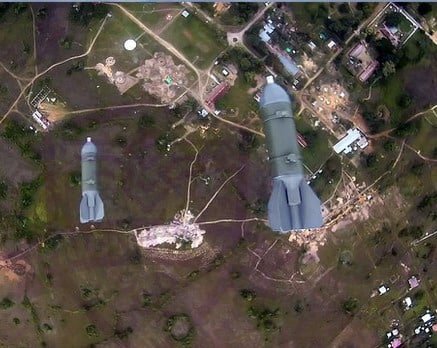
The wider use of unmanned vehicles in the Ukrainian theatre has changed the rules of modern conflict, and all armed forces will probably use unmanned systems in future combat.
This is according to Viktor Listopadov, Regional Director of Ukraine’s SpetsTechnoExport. Speaking virtually at a discussion on ‘Advanced Developments in Ukrainian Combat Unmanned Systems and New Opportunities for African Regional Security’ in Pretoria, he said drones have become an integral part of modern combat operations, performing a wide range of tasks and replacing or supplementing traditional means of warfare.
“Ukrainian military forces have demonstrated innovation in the use of unmanned technologies, leading to the emergence of new directions and approaches, as well as changes in tactics in modern combat operations,” he said.
Unmanned systems are being used for surveillance and reconnaissance, artillery fire correction, strike missions, electronic warfare and suppression of air defences, logistics and medical evacuation, and psychological warfare, amongst others.
New and unique applications that have emerged in Ukraine include long-range/deep strikes, exhausting enemy air defences, coordinating air attacks, logistics, and capturing enemy weapons (using a magnet-equipped drone). Drones have also been fitted with thermite, turning them into aerial flame-throwers.
“Ukraine has become a battlefield where drones are not only widely used but where new technologies and approaches to their use have emerged. These innovations have significantly impacted the effectiveness of combat operations by reducing costs, increasing accuracy, and enhancing the safety of military operations. The technologies that have emerged and developed in Ukraine could become a new standard in modern military affairs, adapting and improving for use in future conflicts,” Listopadov said.
In December 2024, the Ukrainian military carried out an operation exclusively using unmanned systems, resulting in further advancement of its front lines in what it says was a world first.
The efficacy of unmanned vehicles can be seen in the Black Sea, where Ukrainian unmanned surface vessels have sunk more than 20 Russian naval vessels valued at an estimated $2 billion. The cost to Ukraine has been tens of millions of dollars for kamikaze boats.
Mike Tkachenko, Business Development Director at the Abris Design Group, said the battlefield has changed dramatically compared to previous conflicts. The use of surveillance drones has made warfare more transparent than ever.
“It is almost impossible to conceal fortifications, large groups of artillery, vehicles, or soldiers. This has led to a completely new dynamic in warfare. Modern equipment enables continuous real-time tracking of the tactical situation,” with drones providing either photo or video surveillance for intelligence, surveillance, target acquisition, and reconnaissance (ISTAR).
However, drones providing these capabilities face a number of threats, including jamming and spoofing of GPS, radio control systems, and video data transmission; air defence systems; and counterattack against operators or command centres. “This is the most dangerous,” Tkachenko said. “It is very easy to replace the UAV but not the personnel.”
Tkachenko said that at the beginning of the Russo-Ukrainian war, the Ukrainian Army had to urgently adapt drone technologies and experiment with any available solutions. A major issue was using many different drone types, creating problems with coordination and integration. Compatible hardware and software is more important than outright drone performance, he said.
Based on the Ukrainian experience, Tkachenko said that for Africa, UAVs can be used effectively for ISR and border security; special and military operations support; and search and rescue, particularly following natural disasters. Ukraine has, for example, assisted the Mexican government’s special forces in fighting drug cartels.
Another use case for UAVs is demining. Mine detection can be carried out using high-resolution cameras, which is especially effective in areas with minimal vegetation. Multispectral cameras can also be used to detect metallic objects that are heated by the sun during the day. At present, Tkachenko said technology allows for the detection and mapping of surface-laid anti-tank mines, artillery shells, rocket remnants, and surface-laid anti-personnel mines. In one de-mining operation in Ukraine, 228 mines were found in an area of 1 square kilometre.










